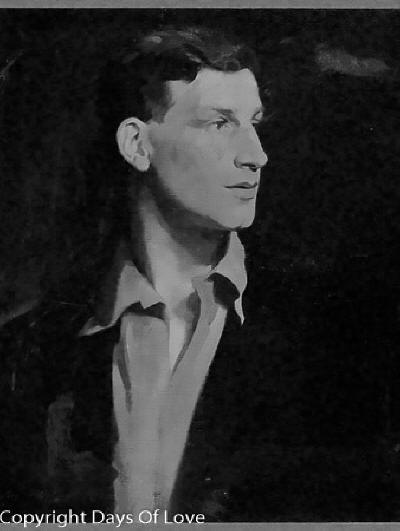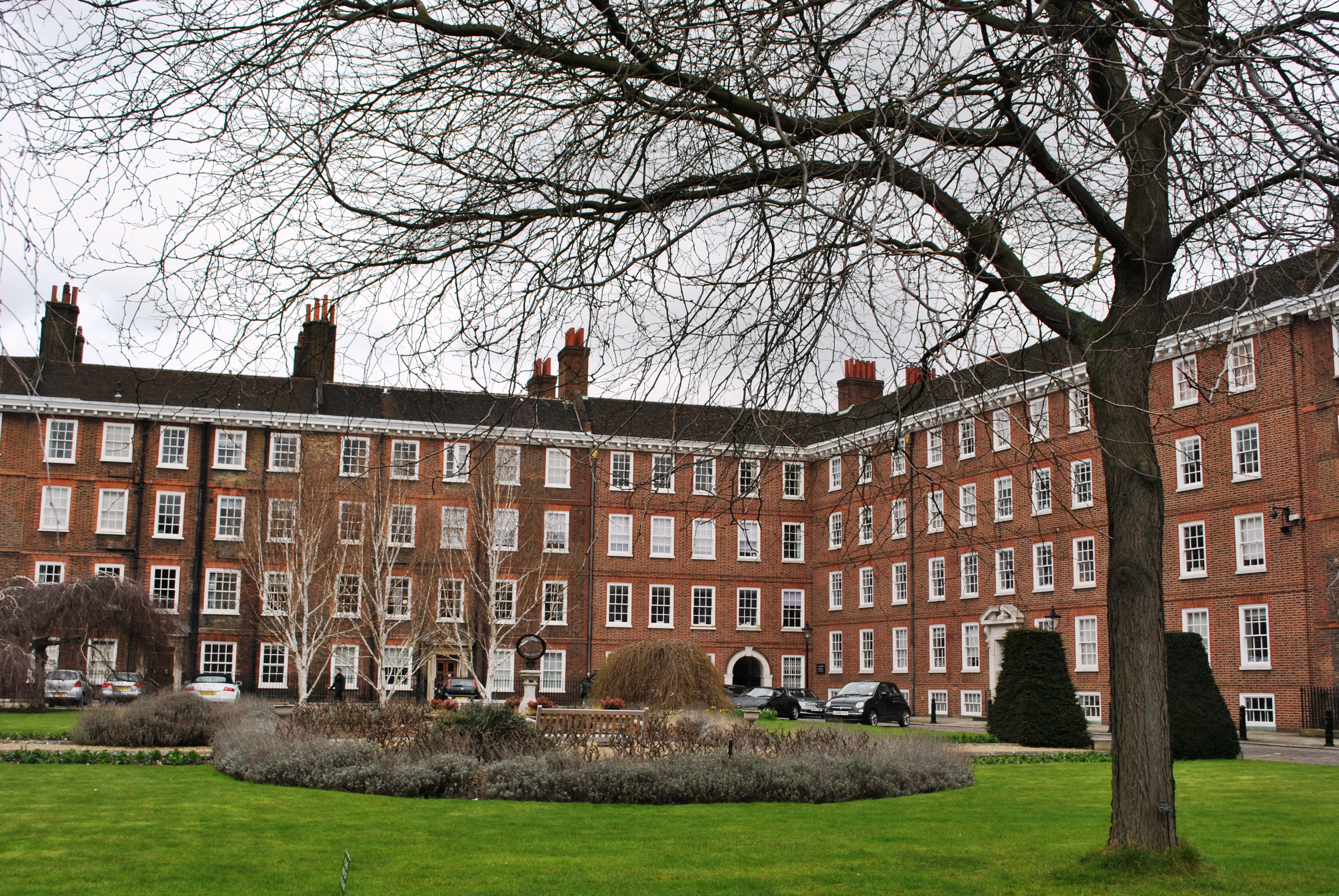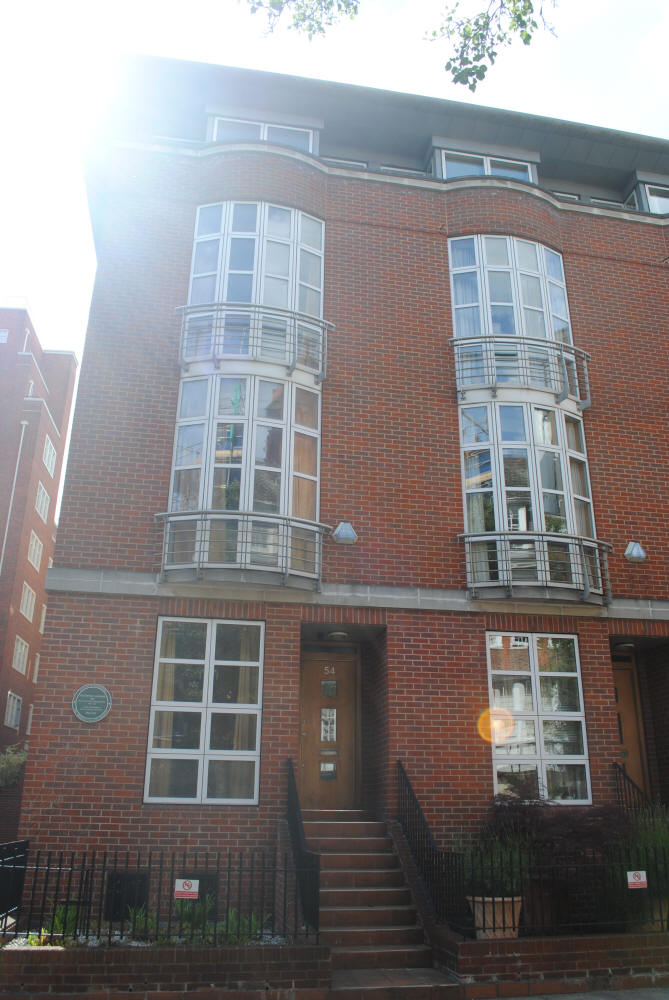Partner Gabriel Atkin, Stephen Tennant
Queer Places:
Weirleigh, B2160, Tonbridge TN12, UK
Marlborough College, Bath Rd, Marlborough SN8 1PA, UK
University Of Cambridge, Cambridge CB2, UK
New Beacon School, Brittains Ln, Sevenoaks TN13 2PB, UK
1 Raymond
Buildings, Londra WC1R 5NR, UK
54 Tufton St, Westminster, London SW1P 3RA, UK
23 Campden Hill Square, Kensington, London W8 7JY, UK
Fitz House, Teffont Magna, Salisbury SP3 5QS, UK
Heytesbury House, Heytesbury, Warminster BA12, UK
St Andrew, Mells, Frome BA11, UK
Westminster Abbey, 20 Deans Yd, Westminster, London SW1P 3PA, UK
 Siegfried
Loraine Sassoon, CBE, MC (8 September 1886 – 1 September 1967) was an English
poet, writer, and soldier. He appears as George Sherston in several of his own
books; as Siegfried Victor in The Apes of God (1930) by Wyndham Lewis;
as David Casselis in But It Still Goes On (1930) by
Robert Graves; and as Patient B in
Conflict and Dream (1923) by William Halse Rivers. Rivers was the army
doctor who treated Sassoon for shell-shock.
Siegfried
Loraine Sassoon, CBE, MC (8 September 1886 – 1 September 1967) was an English
poet, writer, and soldier. He appears as George Sherston in several of his own
books; as Siegfried Victor in The Apes of God (1930) by Wyndham Lewis;
as David Casselis in But It Still Goes On (1930) by
Robert Graves; and as Patient B in
Conflict and Dream (1923) by William Halse Rivers. Rivers was the army
doctor who treated Sassoon for shell-shock.
Decorated for bravery on the Western Front,[1]
Sassoon became one of the leading poets of the First World War. His poetry both
described the horrors of the trenches and satirised the patriotic pretensions
of those who, in Sassoon's view, were responsible for a jingoism-fuelled war.[2]
Sassoon became a focal point for dissent within the armed forces when he made
a lone protest against the continuation of the war in his "Soldier's
Declaration" of 1917, culminating in his admission to a military psychiatric
hospital; this resulted in his forming a friendship with
Wilfred Owen, who was
greatly influenced by him. Sassoon later won acclaim for his prose work,
notably his three-volume fictionalised autobiography, collectively known as
the "Sherston trilogy".
Sassoon had a fine war record of great bravery and was awarded the
Military Cross, but in 1916, partly because of the devastating death of
his friend David
Thomas, his stance changed and he began to oppose the war. Sassoon
was one diarist who made reference to the sexual activity of other men
on the front line, and expressed his attraction to soldiers he came
across by chance - he was particularly taken with David Thomas and a
teenage lad named Gibson, both of whom died in action. David Thomas is
commemorated in various of Sassoon's poems such as A Letter Home: I've
seen Soldier David dressed in green, Standing in a wood that swings To
the madrigal he sings. He's come back, all mirth and glory, Like the
prince in fairy story.

by Glyn Philpot


Gray's Inn, London

54 Tufton St, Westminster

Westminster Abbey, London
Sassoon, having matured greatly as a result of his military service,
continued to seek emotional fulfilment, initially in a succession of love
affairs with men, including:
Only the last of these made a permanent impression, though Shaw remained
Sassoon's close friend throughout his life.[18]
In September 1931, Sassoon rented Fitz House, Teffont Magna, Wiltshire and
began to live there.[19]
In December 1933, he married Hester Gatty, who was many years his junior. The
marriage led to the birth of a child, something which he had purportedly
craved for a long time:
- George Sassoon (1936–2006), who was married four times: firstly
Stephanie Munro, at Inverness in 1955 (dissolved 1961); secondly
Marguerite Dicks in 1961 (dissolved 1974); thirdly Susan Christian-Howard
in 1975 (dissolved 1982); and lastly Alison Pulvertaft.
George became a scientist, linguist, and author, and was adored by
Siegfried, who wrote several poems addressed to him. However, the marriage
broke down after the Second World War, Sassoon apparently unable to find a
compromise between the solitude he enjoyed and the companionship he craved.
Separated from his wife in 1945, Sassoon lived in seclusion at Heytesbury
in Wiltshire, although he maintained contact with a circle which included
E M Forster and
J R Ackerley. One of
his closest friends was the cricketer, Dennis Silk who later became Warden
(headmaster) of Radley College. He also formed a close friendship with Vivien
Hancock, then headmistress of Greenways School at Ashton Gifford, where his
son George was a pupil. The relationship provoked Hester to make strong
accusations against Hancock, who responded with the threat of legal action.
Sassoon was appointed Commander of the Order of the British Empire (CBE) in
the 1951 New Year Honours.[24]
He died from stomach cancer on 1 September 1967, one week before his 81st
birthday.[25]
He is buried at St Andrew's Church, Mells, Somerset, not far from the grave of
Father Ronald Knox whom he so admired.[26][27]
My published books:


BACK TO HOME PAGE

- https://en.wikipedia.org/wiki/Siegfried_Sassoon
- Rossini, Gill. Same Sex Love 1700-1957: A History and Research Guide .
Pen and Sword. Edizione del Kindle.
- Homosexuals in History, A Study of Ambivalence in Society, Literature
and the Arts, by A.L. Rowse, 1977
 Siegfried
Loraine Sassoon, CBE, MC (8 September 1886 – 1 September 1967) was an English
poet, writer, and soldier. He appears as George Sherston in several of his own
books; as Siegfried Victor in The Apes of God (1930) by Wyndham Lewis;
as David Casselis in But It Still Goes On (1930) by
Robert Graves; and as Patient B in
Conflict and Dream (1923) by William Halse Rivers. Rivers was the army
doctor who treated Sassoon for shell-shock.
Siegfried
Loraine Sassoon, CBE, MC (8 September 1886 – 1 September 1967) was an English
poet, writer, and soldier. He appears as George Sherston in several of his own
books; as Siegfried Victor in The Apes of God (1930) by Wyndham Lewis;
as David Casselis in But It Still Goes On (1930) by
Robert Graves; and as Patient B in
Conflict and Dream (1923) by William Halse Rivers. Rivers was the army
doctor who treated Sassoon for shell-shock.




